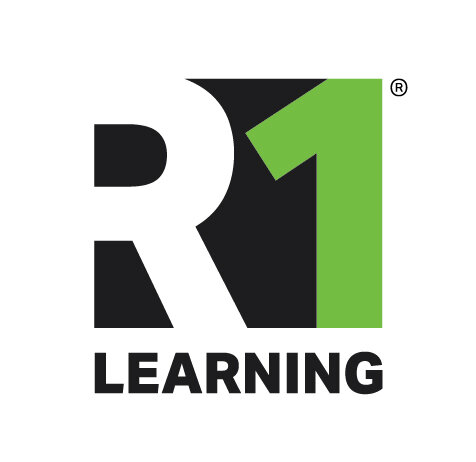9 Substance Classes — What Are The Symptoms of Harmful Use?
Substances are all around us in society. Many are marketed and distributed by some of the most profitable companies in the world (Pfizer, Johnson & Johnson, Roche for medically prescribed pharmaceuticals, Starbucks and other coffee franchises for caffeine, Phillip Morris and Altria for tobacco, Brown & Williamson for a variety of alcohol products, etc.) Others are classified as illegal substances in the United States by the Drug Enforcement Agency (DEA). No matter the substance, all, when consumed into our bodies have properties and characteristics that change physiology, alter brain chemistry, and can impact one’s health and wellness mentally, physically, and socially.
The primary purpose of today’s post is to share the basics on how drugs are classified, provide examples of substances for several classes, and highlight a few examples of their physical withdrawal symptoms. Our goal is to increase your knowledge and highlight concrete ways to use this information for yourself or when working with others. Enabling individuals to apply what they’ve learned to their own situation and circumstances through a self-discovery process is easy to do with the Discovery Cards and the R1 Discover App. Putting tools into the hands of individuals empowers them to make choices and self-direct their own journey on the path of health and wellness.
In order to maximize your experience today, take a moment to refresh your knowledge about substance use from our earlier post: Substance Use — 11 Symptoms for Observing the Biological, Psychological, and Social Patterns of the Disorder. Then read through the 9 Substance Classes below and answer the Questions to Explore for yourself or as part of a group.
Explore R1 Discover — Interactive Engagement Tools
9 Substance Classes — Substances Defined
The 9 Substance Classes and substances defined in the Discovery Cards and R1 Discover App have different chemical properties, effects on the physical body and brain functions, and withdrawal symptoms. Substances also have different techniques for distributing them into the body. These include ingesting substances into the digestive system (by mouth), injecting substances into the circulatory system or blood stream (injecting through needles), and by absorbing substances into the bloodstream through the nose (by snorting) or through the lungs (by in-hailing, smoking, or vaping). The 9 Substance Class Discovery Cards include a list of substance examples, common street names, and some of the withdrawal symptoms for each class.
Reflection Activity: Identify My Substances
Let’s get started. Take a moment and identify substances that you have used in your past. Make a list and for each, identify if each substance was prescribed for you by a medical professional or something you experimented with or used on your own. Put a check mark next to the ones that you currently use. Reflect on each and identify which ones do you find our unhealthy for you, you may be using addictively, or are causing you some sort of negative consequences (put a “-” next to the substances). Circle one that you’d like to discontinue use of in the next 1-3 months. Then, answer the Questions To Explore below.
R1 Facilitator Guide Activity — Below highlights an R1 situational learning activities that build the skills for change.
Questions to Explore
Bonus Activity: Select one of the substances you’d like to explore quitting and see what stage of change you are in today. Go to R1 Discover demo and take the Identify My Stage of Change activity.
Answer the questions below for yourself or as part of a group experience:
Which substances have you tried or used? What led to their use?
Which substances do you still use today? How much and how often do you use each?
Which Substance Use Classes are represented from your list? Are they all in the same class or have you used substances from different classes? Explain.
For the substances you currently use (if any), how much and how often do you use each? Explain.
For the substances you currently use (if any), do you experience any withdrawal symptoms when you try to cut back or stop using? What do you physically or mentally experience? Explain.
Did you circle any that you’d like to stop using completely? Have you tried to cut down or stop using them? What happened? Explain.
What is your major learning or insight from this activity? What is one action you can take to explore this topic further? Who can ask for help and support you?
Thank you for reading this post and participating in this activity. Contact us if you would like to learn more about Substance Use or the R1 Learning System. We look forward to hearing from you.
References:
The Diagnostic and Statistical Manual of Mental Disorders (5th ed.; DSM–5-TR; American Psychiatric Association, 2022)
Substance Abuse and Mental Health Services Administration (SAMHSA): Alcohol,Tobacco, and Other Drugs
Miller WR, Tonigan JS. Assessing drinkers’ motivation for change: The Stages of Change Readiness and Treatment Eagerness Scale (SOCRATES). Psychology of Addictive Behaviors 10:81-89, 1996.
Copyright 2023 R1 Publishing LLC / All Rights Reserved. Use of this article for any purpose is prohibited without permission.
R1 Learning Tools and Resources
The R1 Discover App and the Discovery Cards are interactive and engaging tools for exploring these topics with individuals or groups. Integrating these tools into your in-person or virtual settings will allow individuals to build their own vocabulary, think about these concepts concretely, and put their choices into action. Visit the R1 Store to learn more about this topic and more.
Here are a few ideas to help you learn more about R1 and engage others on this topic:
Share this blog post with others. (Thank you!)
Start a conversation with your team. Bring this information to your next team meeting or share it with your supervisor. Change starts in conversations. Good luck! Let us know how it goes.
Visit www.R1LEARNING.com to learn more about R1, the Discovery Cards, and how we’re creating engaging learning experiences through self-discovery.

























